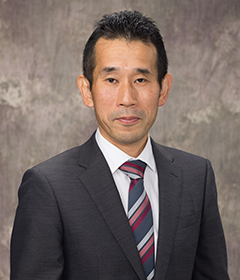Timor-Leste is one of the few countries which have gained independence in the 21st century. At the time of its independence, Timor-Leste was a region with a population of just 920,000[1], yet it defied the much larger Indonesia, a nation with over 200 million people, and achieved independence through its struggle for self-determination. Timor-Leste experienced serious famine and numerous acts of violence during the Portuguese colonial period and the subsequent Indonesian occupation, but it overcame such conditions to achieve independence, making it a “model case” of statehood.
How has Timor-Leste changed in these two decades since its independence in 2002? The author stayed in Timor-Leste from September 2023 to March 2025 and observed the changes in society from viewpoints of the Timorese people. Based on this experience, the author will review the progress and challenges since gaining sovereignty and discuss the implication of its Timor-Leste’s path to independence.
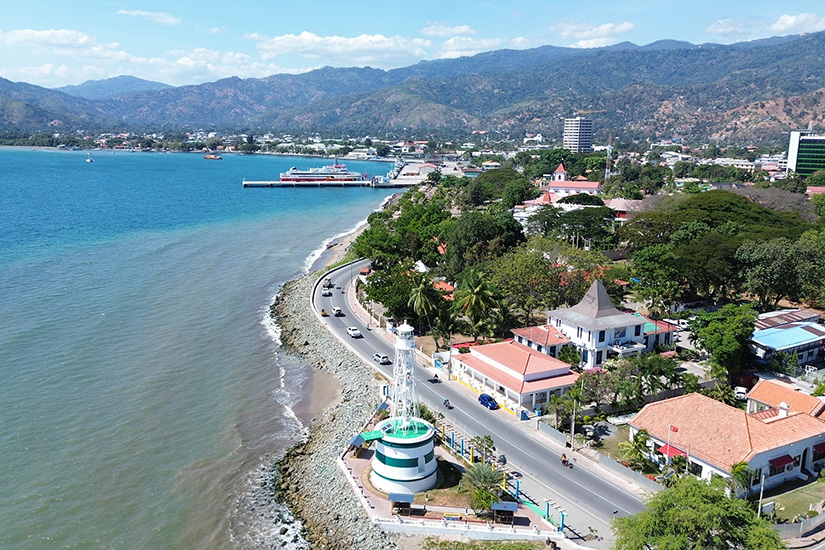
Timor-Leste since independence
Since independence, Timor-Leste has experienced a period of steady development, with significant improvement in its socio-economic sector. For example, many school facilities had been destroyed before independence, but following nationhood, reconstruction proceeded dramatically, and the primary school enrollment rate increased to 83% in 2008 and 92% in 2011[2]. However, since 2012, when the United Nations Integrated Mission in Timor-Leste (UNMIT) — the last United Nations (UN) peacekeeping operation in Timor-Leste — withdrew, the socio-economic situation gradually stagnated or even regressed. For example, the Human Development Index, which measures achievement in key dimensions of human development and well-being, based on factors such as life expectancy, education, literacy, and income, has stagnated since the mid-2010s (see Figure 1), and per capita GDP (excluding oil revenues) has been declining since peaking in 2016 (see Figure 2). Since then, various social security systems, such as subsidies for the poor, and food distribution programs (Cesta Basica), have been widely provided to the population (see Figure 3). Nevertheless, average wages have declined in both the public and private sectors from 2013 to 2021 (see Figure 4). Additionally, the proportion of the working-age population that is actually employed has decreased from 2016 to 2021 (see Figure 5). Looking at the national budget, approximately 83% of revenue comes from the Petroleum Fund and its related components[3]; however, oil extraction has now ended, and current projections indicate that the Petroleum Fund surplus will be depleted by 2035[4].

[Figure 1] Trends in the Human Development Index
(Source:IMF “Democratic Republic of Timor-Leste: 2023 Article IV Consultation-Press Release; Staff Report; and Statement by the Executive Director for the Democratic Republic of Timor-Leste”)
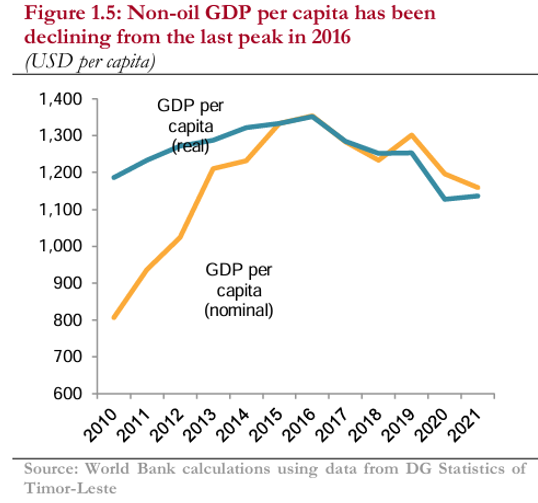
[Figure 2] Changes in GDP per capita (excluding oil-derived components)
(Source:World Bank, “Timor-Leste Economic Report” (December 2022) )

[Figure 3] Subsidies and other payments
- 90% of the population received the flat US$200 subsidy (implemented in December 2022)
- More than 60% of the population received Food Basket (Cesta Basica (CB)) (implemented in 2020)
(Source:World Bank, “Timor-Leste Economic Report” (January 2024) )
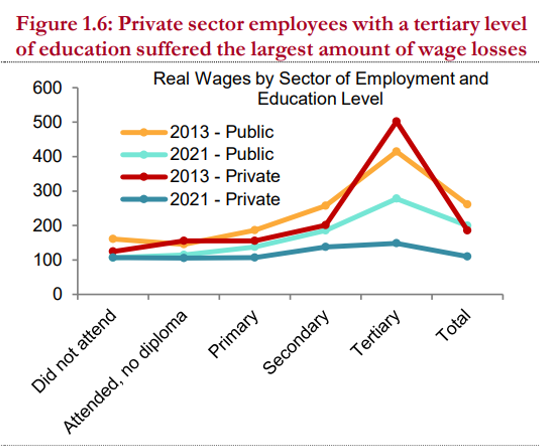
[Figure 4] Changes in Wages
(Source:World Bank, “Timor-Leste Economic Report” (July 2024))
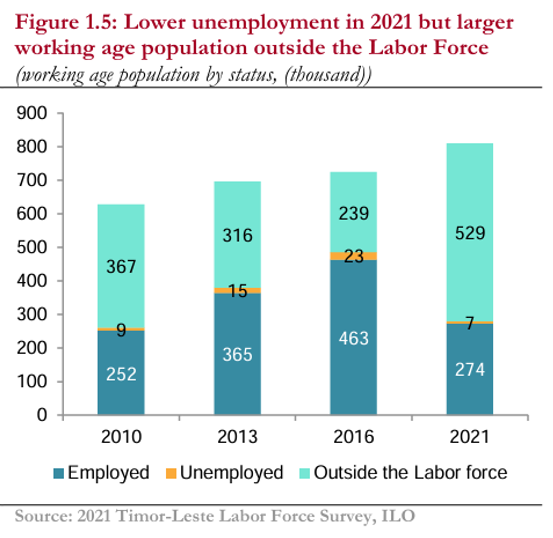
[Figure 5] Trends of Labor Force Participation Rate
- Labor Force Participation Rate in 2021 is about 30% among total working age population.
(Source:World Bank, “Timor-Leste Economic Report” (July 2023))

What are the causes of stagnation?
Although Timor-Leste has been independent for more than 20 years, the government's administrative capacity remains insufficient. The main causes are ① Ministries and agencies have insufficient capacity in preparing operational plans and implementing them, and ② An inadequate evaluation system for civil servants, resulting in a lack of incentives for effective and efficient work.
One of the factors obstructing the improvement of administrative capacity is the language policy and the related challenges of education/human resource development systems. Upon independence, the official languages were changed from Indonesian (Bahasa) to Portuguese and Tetum[5], but society was unable to adapt to the linguistic change. As a result, the education sector ended up with a system where teachers who could not speak Portuguese and lacked the necessary teaching skills and experience were responsible for education. This has become a serious issue for the country's education and human resource development system. In addition, public services provided by the government, such as health and infrastructure development, which are essential to people's lives, continue to be inadequate in terms of both quality and quantity. As a result, economic growth and investment attraction have not progressed as expected[6], and a socio-economic system independent of petroleum resources has not been established.
Despite Timor-Leste receiving a comparatively large amount of external assistance per capita from the UN and other foreign countries, in contrast to its neighbors in the region[7], it has not been able to translate this external assistance to its own growth. Since independence, Timor-Leste has received a great deal of support, but rather than creating an autonomous model of national governance, it has developed a tendency to rely on overseas assistance for national governance[8].
Efforts for Development and Challenges in Future
Under these circumstances, notable reforms are currently underway. These include civil service reform and the introduction of a monitoring and evaluation system for national development projects. Regarding the former, the Civil Service Commission is taking the lead in considering the introduction of a system to develop civil servants with a strong sense of duty who can perform their duties efficiently and effectively[9]. These reforms involve thorough goal and performance management for each civil servant and implement personnel measures such as promotions and disciplinary measures under clear rules. Regarding the latter, the objective is not limited to performance monitoring in terms of budget execution, but also to quality and result management of projects, thereby aiming for transparent, effective, and efficient fiscal management and implementation of qualified public works[10]. These two initiatives are expected to bring about dramatic improvements in the quality of governance through their mutual interaction.
On the other hand, in Timor-Leste, there are concerns now that USAID has stopped its operations, and that the UN will be unable to provide the same level of assistance as before, due to the United States' significant reduction and suspension of contributions to various UN funds and programs. It is also unclear whether the EU will continue to provide aid on the same scale as before, as it reviews its foreign aid policy. With the environment for external aid having changed significantly, Timor-Leste needs to review its aid dependency, which has been established since independence, and manage the country through its own capabilities.
A fiscal crisis is predicted to hit Timor-Leste around 2035, but is it possible for the country to restore its financial structure, and establish and implement a self-sustained development model by then? In a report published in February 2025, Sui-Lee Wee of The New York Times quoted the voices of disappointment from the people of Timor-Leste, saying, “Winning sovereignty is different from running a country,” or “Independence hasn’t made a difference to us”[11]. Whether the people of Timor-Leste, who dreamed and fought for independence, can turn their disappointment into hope depends on the Timorese people themselves. However, as a nation that chose independence, it is essential to understand that there is no alternative but to move forward and resolve issues through their own efforts.
What should we learn from Timor-Leste's independence process?
First, it is important to note that the right to self-determination (the desire for independence) and autonomous governance after independence should be considered separately. Even if there is a strong will to achieve independence, it does not necessarily mean that the group achieving sovereignty will be able to better provide public services. This is because it is not easy to run a country and provide better public services to the people in all aspects of politics, society, and economy. Furthermore, when a small group seeks independence, it may be easy to reach internal consensus due to its small size, but it may be difficult to operate as a nation due to its small population and lack of economies of scale. For example, even if a country attempts to train professionals with specialized skills, such as doctors and lawyers, it is not easy to train such professionals sustainably at institutions of higher education due to limited employment opportunities. Such risks should be also considered in terms of national governance and management.
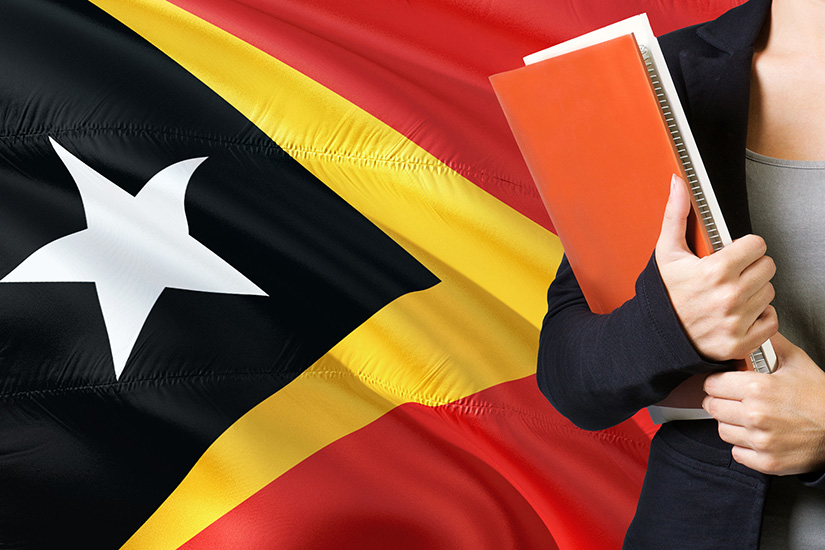
Reviewing Timor-Leste's independence process, three factors can be identified as contributing to its success: (1) the strong leadership of the leaders who spearheaded independence, (2) the support of foreign countries, especially superpowers (or their refusal of obstructing independence), and (3) the quick and effective support provided by the UN. Regarding (1), in Timor-Leste, leaders such as Ramos-Horta and Xanana Gusmão, who led the independence movement, possessed exceptional leadership, strategic vision, and decisiveness, which served as the driving force behind independence. Regarding (2), the 1990s, when the momentum for Timor-Leste’s independence grew, was immediately after the end of the Cold War, when the US-Soviet rivalry had ended and the international community was not divided. Additionally, in an international environment where the international community was not divided and tensions between countries were relatively low, Timor-Leste's independence did not conflict with the national interests of any of the superpowers at the time, and therefore the incentive to obstruct independence was very limited. Regarding (3), in the 1990s following the end of the Cold War, there was little conflict among the permanent members of the UN Security Council. Against this backdrop, there was momentum within the international community to support multilateralism, such as the UN system. Therefore, the UN system, including UN Peacekeeping Operations, had ample budgets and was able to take the initiative in decision-making, enabling it to carry out consistent, flexible, and effective operations from before Timor-Leste's independence to after independence. Thus, the convergence of these three factors was the main reason why Timor-Leste could achieve its independence. Timor-Leste's independence can be said as “a product of the time”, when there was momentum throughout the international community to respect universal values, such as human rights concept, including the right to self-determination, and humanitarianism.
By contrast, looking at the current international situation, tensions are rising between the United States, Russia and China, and the consensus-building among the international community, such as in the UN Security Council, has become very difficult. Despite conflicts occurring in various parts of the world, the UN has not decided on any new peacekeeping operations since its last decision of deployment to Haiti in 2017[12]. In terms of trends of external assistance, the United States has suspended USAID activities and significantly cut its contributions to international organizations such as the UN. In Europe as well, there is a growing movement to review overseas assistance in line with national interests. Overall, foreign aid policy and its volume are in the midst of significant changes. Under these circumstances, it may not be possible to expect the same kind of flexible and effective support for independence by the UN and bilateral donors that was seen in the time of Timor-Leste’s quest for independence.
Even today, separatist movements are active in various regions, such as Balochistan (a region of Pakistan)[13], Somaliland (a region of the Federal Republic of Somalia), and Bougainville (a region of Papua New Guinea)[14]. However, considering such circumstances, aiming for a system that allows coexistence within a single nation may be a more realistic solution rather than separatism. Such a coexistence system depends on whether the majority within the country has the will and ability to listen to the voices of the minority and reflect them in policies and actions, and whether both sides can build a political and social system that satisfies both. In a world where xenophobia is on the rise, achieving a coexistence-based society has become even more challenging. Nevertheless, in today's international society, the realization of a coexistence-based society has become more important than ever. It is necessary to deepen our discussions and take practical steps toward achieving and putting into practice such a coexisting society.
(2025/08/28)
Notes
- 1 Timor-Leste population, POPULATIONOF.Net.
- 2 School enrollment, primary (% net), Timor-Leste, World Bank Data.
- 3 “General State Budget for 2025,” Ministry of Finance, Timor-Leste.
- 4 “General State Budget for 2025,” Ministry of Finance, Timor-Leste. As a new development project, the development of the Greater Sunrise oil field is under consideration, but it would be very difficult to reach the break-even point by 2035.
- 5 Since independence, Portuguese and Tetum have been designated as the first official languages, while Indonesian (Bahasa) and English have been designated as working languages (second official languages). In schools, Indonesian, which had been used until independence, is no longer used. However, immediately after independence, only a small number of people could speak Portuguese, and even today, it is said that not many citizens understand Portuguese, although it is the official language.
- 6 According to World Bank’s “Doing Business 2020” Report, the Doing Business ranking (ranking of easiness of conducting business) of Timor-Leste is No. 181 among 190 countries.
“Doing Business 2020” World Bank, 2020, p.16 - 7 Using data from the World Bank database, the author calculated the amount of ODA received per capita. From 2013 to 2022, the average per capita amount for Southeast Asian countries was less than $100 per year, while Timor-Leste received $200 per capita.
- 8 For example, in some ministries, even after the completion of facility construction by foreign aid agencies, the handover of facilities to Timor-Leste government was postponed, by the request of relevant ministries which asked foreign aid agencies to continue to operate the facilities. Usually, such phenomenon is not seen in other developing countries.
- 9 “Government suspends recruitment of new civil servants,” Tatoli, 7 May 2025.
- 10 “Government Celebrates Two Years in Office with Ongoing Structural Reforms and Commitment to Sustainable Development,” Government of Timor-Leste, 2 July 2025.
- 11 Sui-Lee Wee, “The Growing Pains of Asia’s Newest Country,” The New York Times, 16 February 2025.
- 12 El-Ghassim Wane et al, “The Future of Peacekeeping, New Models, and Related Capabilities,” United Nations, October 2024, p.8.
- 13 ACLED, “Militants thrive amid political instability in Pakistan,” 12 December 2024.
- 14 Marcus Ray, “Bougainville Continues Its Struggle For Independence,” The Diplomat, 17 March 2025.

